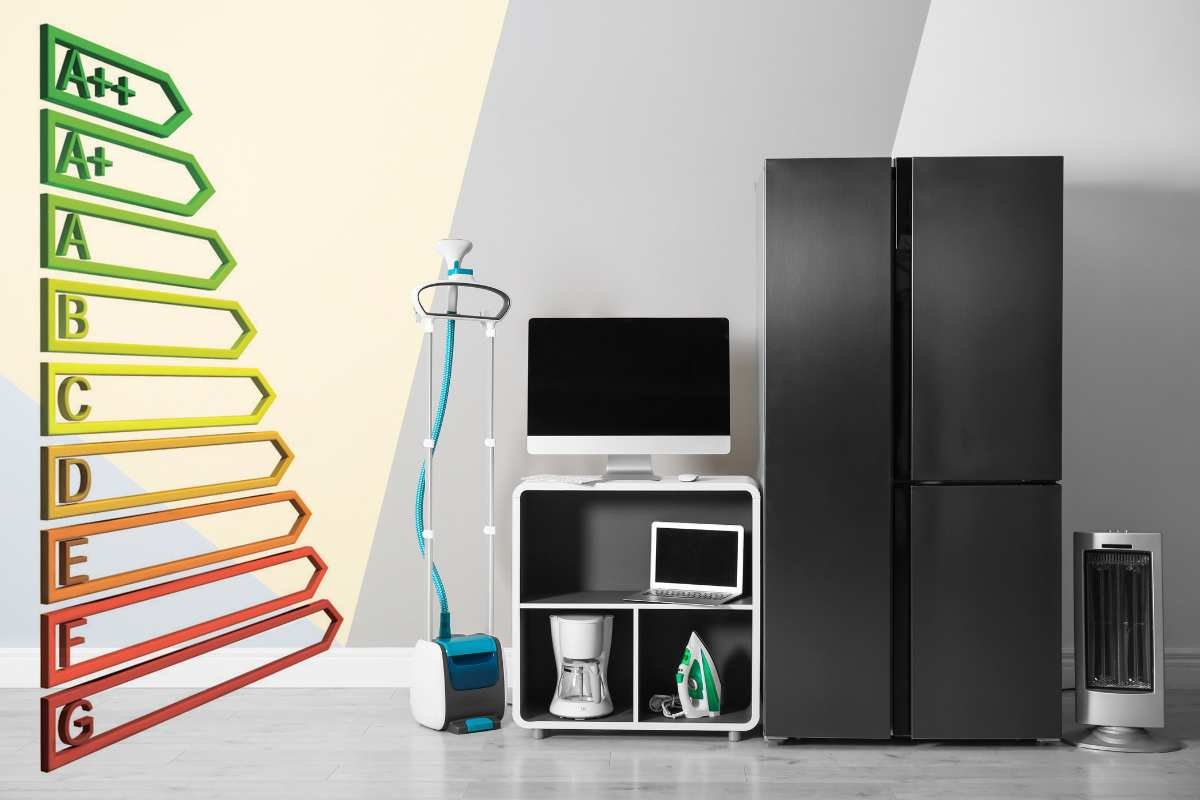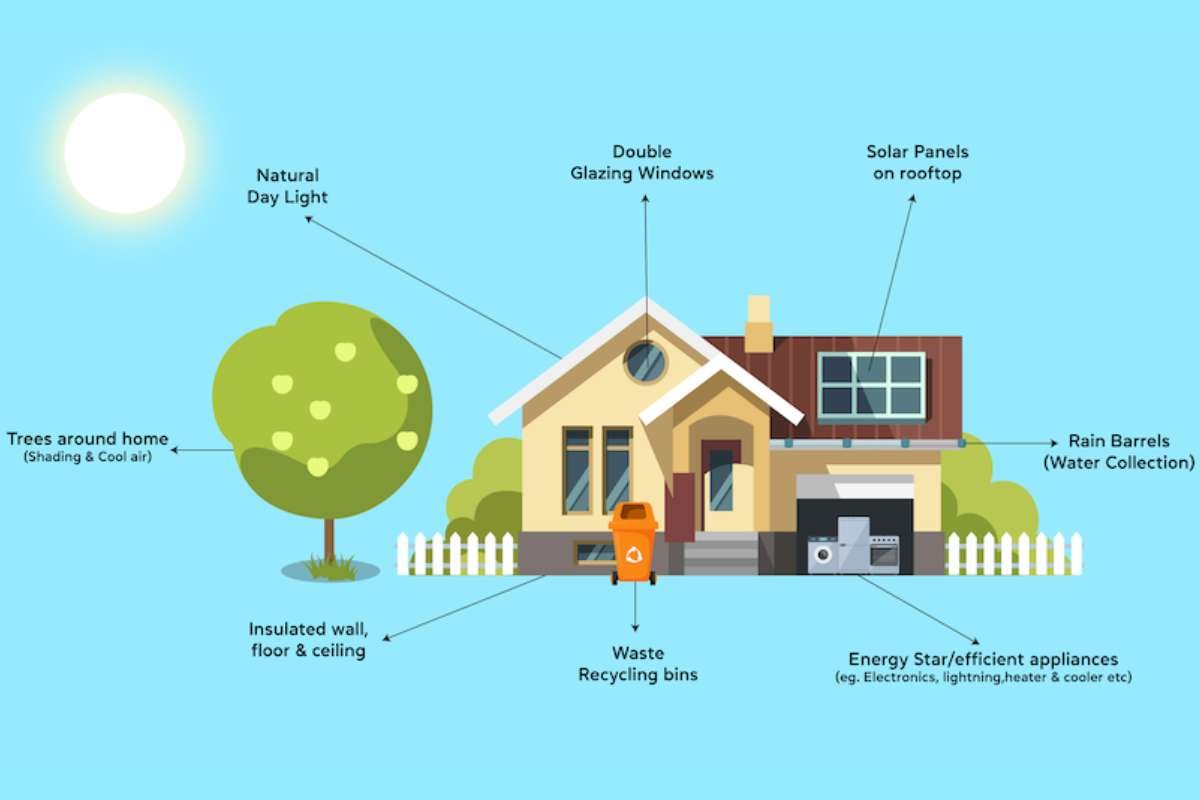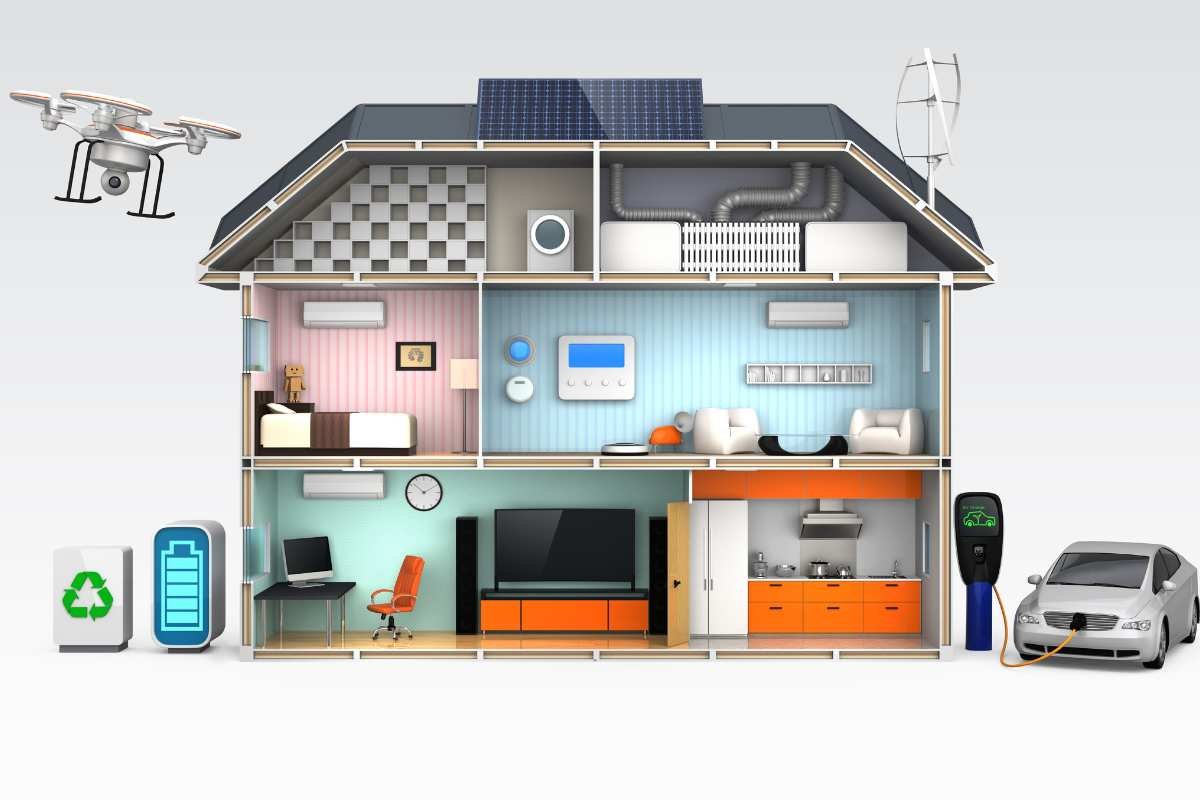According to the CO2 emissions report 2023, the emission of greenhouse gases increased by 1.1%, which is 410 million tons more than in 2022. In today’s environmentally conscious world, using energy-efficient appliances is crucial in reducing greenhouse gases, helping the planet be safer and more sustainable to live on. These appliances help in creating green homes that not only save the environment but also save homeowners money in the long run.
In this blog, you will learn about how energy-efficient appliances save money with the help of green homes, what essential steps to consider, and how they reduce energy consumption levels.
What Are Green Homes?
Green homes are residences designed with a focus on reducing the carbon level of the earth. These homes are built using sustainable materials and energy-efficient appliances, offering features of renewable energy resources like solar panels. However, solar panels are known for being pricey. Plus, it can sometimes be a bit challenging to get a loan, so if you’re wanting to change your roof, like add solar roofing for example, then it might help to look into contractors and roofers in your area that offer financing (sometimes solar companies can offer financing too).Overall, the aim of creating green homes is to live in a space that consumes fewer resources, produces less waste, and relies on clean energy sources.
The Environmental Benefits of Energy-Efficient Appliances

To truly understand the benefits of green homes, you need to first understand the impacts of living in traditional homes. Traditional homes require lots of resources and energy to build and run, which produces greenhouse houses to complete multiple requirements of heating, cooling, lighting, and household appliances.
On the other hand, a green home reduces these impacts and prioritizes energy efficiency, reduces water consumption, and promotes the use of sustainable materials, all while giving you the same comfort as traditional homes.
1. Lower Energy Bills
The cost of using energy-efficient appliances is high, but after installation, you will notice a heavy decrease in overall monthly bills. Now the saved amount can be used further for any other essential expenses or investments. Additionally, now you are not facing the challenges of changing the appliances timely and purchasing new ones. Depending on the cost and power consumption, the appliances have a good life span of a minimum of 3 to 4 years.
2. Reduced Maintenance Costs
The life of appliances can be increased if you maintain them timely. Each appliance should be monitored carefully, like workings, efficiency, and performance. If you get anything wrong, go to the mechanics and maintain it timely to increase its life span. Proper maintenance ensures the efficiency of each appliance in the home performing at its peak and maximizes energy savings.
3. Longer Lifespan
There are different types of energy-efficient appliances available on the market; some are renewable, while some aren’t. Their life span depends on the size and market value. You can take examples of LED bulbs and refrigerators to understand well. You have to replace the bulbs; on the other hand, refrigerators have a longer lifespan and can be repaired. High-quality materials and superior craftsmanship are the major reasons that make the environment more sustainable.
Steps to Build a Green Home

Do you know you can build a green home yourself? And get full control over every aspect of your home’s design and construction, including your personal choice of energy-efficient appliances. Here are some essential steps to consider when building your own green home:
1. Site Selection
The first and crucial step in building a green home is choosing a site that maximizes natural resources such as sunlight, water, and fresh air. If you’re selecting the right site, you don’t need to travel more for natural resources; the site will automatically provide them for sustainable living.
2. Sustainable Building Materials
Use sustainable and eco-friendly building materials that are durable and have less environmental impact. You can use any recycled materials or products that emit low organic compound emissions.
3. Energy Efficient Design
Give design to your green home such that energy-efficient appliances can be placed properly and have enough space to live and enjoy. If you’re not confident in building a proper design, connect with expert designers or architects.
4. Energy Efficient Appliances
After completing three of the above steps, the last one is to place energy-efficient appliances in your green home. If you’re confused about purchasing the appliances, prefer ENERGY STAR certified. It includes only 5-star appliances: HVAC systems, water heaters, refrigerators, and more.
What Makes Appliances Energy Efficient?

Multiple factors work in energy-efficient appliances to save money: physical designs, mechanisms, and different technologies.
- Physical Design Example: Refrigerator with freezers at the top are more efficient than those that have them at the bottom because the compressor is in the bottom part, which releases more heat. As a result, the freezer needs more energy and electricity to maintain the freezing level.
- Heat-pump Tumble Dryers Example: They use the heat in your home to dry clothes instead of heating the elements. Appliances also save energy with an ‘eco’ mode, which allows them to use less power. You can connect it to the familiar examples of sleep mode on your computer or laptop.
- Different Technologies Example: There are technologies available used in the development of appliances. You can learn through the guide to use them properly and the time when you should go for maintenance to prevent damage.
Conclusion
The level of CO2 is rising each day, making it crucial to use energy-efficient appliances in the home and make our planet a sustainable place. For a moment, buying these appliances may seem costly, but in return, you get heavy rewards like saving energy bills, long life, durability, and reduced maintenance. Take the first step today—replace at least one power-consuming appliance with an energy-efficient appliance.









